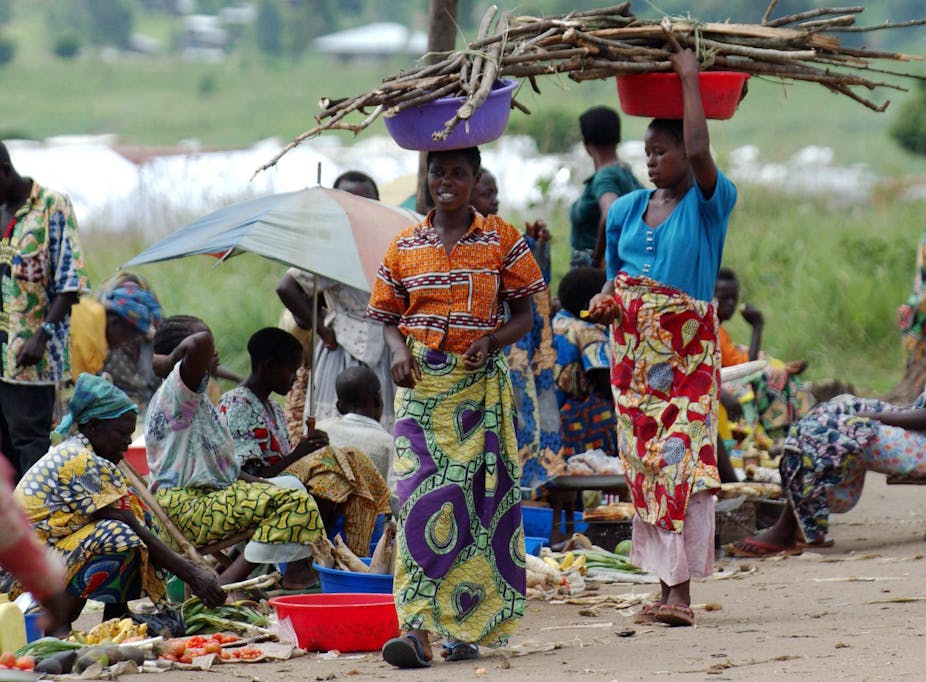After decades of advocacy, a global summit was finally convened in London three years ago to find a way of ending sexual violence in conflict situations. The aim was to focus attention on this often-overlooked aspect of warfare.
While this is right and good, over emphasising conflict-related sexual violence runs the risk of making us lose sight of the fact that a war zone is not the most dangerous place for a woman. Her home is.
Nearly a third (30%) of women worldwide in intimate relationships will experience violence at the hands of their partners. This is according to the World Health Organisation, the London School of Hygiene and Tropical Medicine and the South African Medical Research Council. Globally, about 38% of all women murdered die at the hands of their intimate partners.
South Africa is a case in point. According to a 2016 health and democratic survey, a fifth (21%) of women over 18 years old in intimate relationships have experienced physical violence from a partner; 6% experienced sexual violence from a partner. And a retrospective national study published in 2009 put the South African mortality rate from intimate partner violence at 8.8 per 100 000 women – twice as high as the USA.
Not that America is a safe place for women. The Centre for Disease Control’s 2010 National Intimate Partner and Sexual Violence Survey found that 9,4% of women have been raped by intimate partners in their lifetime. 15,9% of women have experienced sexual intimate partner violence other than rape, and nearly 33% of women have been subjected to physical violence at the hands of their partners.
Shocking new findings show that even in conflict-affected countries infamous for the high rates of sexual violence perpetrated by fighting forces and where soldiers and rebel fighters are a daily danger to women, their husbands and boyfriends are the bigger threat. A baseline household survey done in the north-east of the Democratic Republic of Congo (DRC) showed that women reported very high levels of intimate partner violence – much higher than the rate of sexual violence perpetrated by soldiers and militias.
DRC research
The baseline household survey was done in 15 communities in the Ituri Province of the DRC and 769 people were interviewed.
It was conducted by Tearfund and HEAL Africa as part of a project called “Engaging with Faith Groups to Prevent Violence Against Women and Girls in Conflict-affected Communities”. This project is funded by UK aid from the UK government, via the What Works to Prevent Violence Against Women and Girls Global Programme. The funds are managed by the South African Medical Research Council.
The eastern DRC is still racked by ongoing violence from different rebel groups. This has been going on for decades, and the eastern DRC is known for high rates of very violent sexual attacks perpetrated by soldiers as well as rebels.
The survey showed that non-partner sexual violence – which would include sexual violence perpetrated by soldiers and rebels – was very high – 20,8% of women reported non-partner sexual violence within the last year. This is much higher than the global figure of 7% for lifetime experience of non-partner sexual violence.
This outcome of the survey was expected. What wasn’t was the shocking finding that more than two thirds (68.7%) of the women who reported having experienced non-partner sexual violence in the last 12 months, said that the perpetrator was a known person or a family member. Only in 6% of the cases was the perpetrator a militia member or another unknown person.
As shocking was the very high levels of intimate partner violence: 68.8% of women in relationships who took part in the survey reported having experienced some form of intimate partner violence in the previous 12 months, and 38,4% had been sexually violated by an intimate partner in the last year. Over 68,2% of men in relationships reported perpetrating intimate partner violence.
War versus the home
While still under researched, there is evidence suggesting that intimate partner violence increases during times of conflict, is more common in couples that experienced or were affected by armed conflict.
Nevertheless, the survey confirms that, even in areas affected by conflict, intimate relationships are the biggest and most consistent threat to a woman’s safety.
What this underscores is that yes, there is need to address the abuses suffered by women at the hands of those waging war. But what musn’t be forgotten is that, for many women all over the world, their homes are the battle front.
Feminist theories explaining violence against women have gained increasing traction in the past few decades. They explain that such violence is a result of male power within patriarchal society, revealing the relationship between gender and power. Even sexual violence is about power, as through the act men aim to prove their dominance and control over women.
Addressing this imbalance in society is difficult. One possible avenue through which it can be done is religion and religious institutions. Religion is able to influence behaviour and motivate and facilitate social change. While research has shown us that religious institutions are usually patriarchal institutions, upholding the status quo that is detrimental to women, the opposite can also be true. Tearfund and HEAL Africa, focusing on religious leaders to act as catalysts to prevent violence against women and girls in Ituri province, are banking on this.

